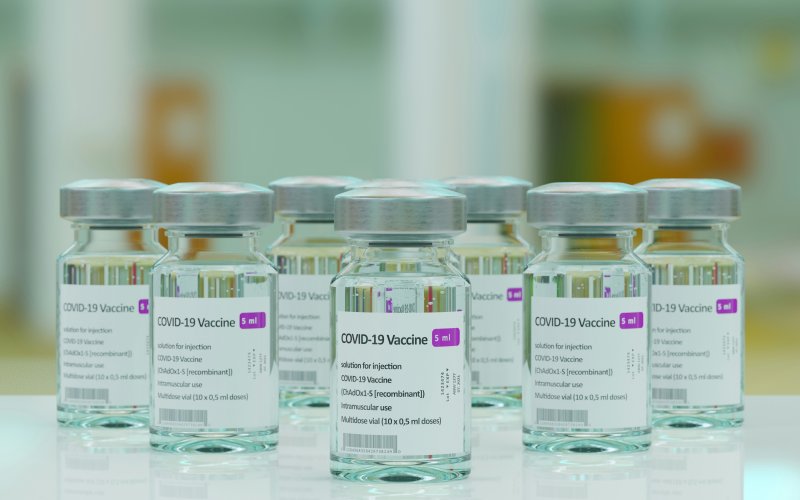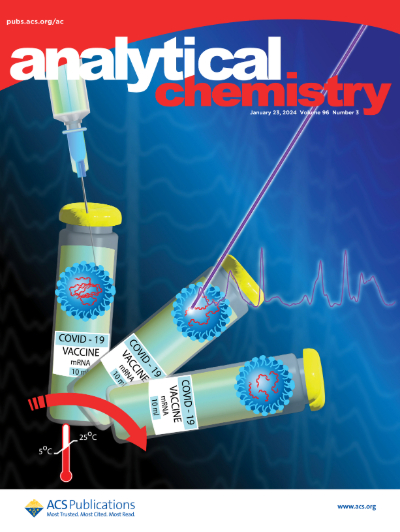UAlbany Chemists Develop Method to Confirm mRNA Vaccine Stability

By Erin Frick
ALBANY, N.Y. (March 28, 2024) — University at Albany researchers at the RNA Institute have developed a new method to test COVID-19 vaccine integrity that could allow anyone with basic skills in vaccine handling to detect expired vaccines quickly and effectively, without specialized lab equipment. By employing laser-derived signals to assess vaccine stability, the method can be performed on sealed vials with no disruption to the vaccine’s therapeutic effects. The system could be contained in a portable unit for easy transport and handling.
The research marks an important advancement in mRNA vaccine technology and was featured on the January 2024 cover of Analytical Chemistry.
“Current methods for testing the integrity of mRNA-based vaccines are destructive, time-consuming, costly and require highly skilled personnel,” said collaborator Lamyaa Almehmadi, who led this study as a PhD student at UAlbany’s RNA Institute and is now working as a postdoc at MIT. “There is an unmet need for a quick and easy method to test the stability of mRNA vaccines distributed to vaccine clinics, medical offices and pharmacies worldwide. To the best of my knowledge, our method is the first to enable an in-situ, non-destructive and reagent-free approach for mRNA stability analysis in mRNA-based vaccines.”
When the first mRNA vaccines for COVID-19 were being rolled out, concerns quickly emerged around vaccine transport and storage. This is because the vaccines rely on active mRNA molecules that can degrade with prolonged exposure to sunlight and/or temperatures outside the range of minus 80 to minus 20 degrees Celsius.
Although mRNA vaccines pose special logistical challenges, the global public health community has successfully implemented systems to maintain optimal conditions for vaccine stability. With these systems in place, this new method can provide an additional layer of assurance to guarantee vaccine stability and bolster confidence in their efficacy.
Using lasers to assess vaccine stability
The method employs a unique Raman spectroscopy instrument developed by UAlbany’s Igor Lednev, the Williams-Raycheff Endowed Professor in the Department of Chemistry. The technique involves pointing an ultraviolet (UV) laser into a liquid, which creates scattered light that can be detected and analyzed, revealing chemical signatures. Since its invention about 20 years ago, Lednev’s lab has adapted the technology, combined with advanced machine learning, for various applications including forensic science and disease detection.
In this latest application, Lednev’s team developed a way to detect small changes in mRNA structure that indicate loss of therapeutic functionality.
“Our method works by shining a deep-UV laser through a vial of vaccine and collecting the resulting scattered light,” said Almehmadi. “This scattered light is then detected by our instrument, and our software processes it to yield the RNA signature, known as the Raman spectrum. The mRNA Raman spectrum is then used for RNA degradation analysis. The test is rapid, typically taking just a few minutes to complete.”
Compact tech to improve accessibility
Unlike existing methods used to test vaccine stability which require specialized training and must be conducted in a lab, this method can be fully contained in a handheld instrument. It is also non-invasive, so could be used to test multiple vials of vaccine, which, if found to be stable, could then be administered.
“Individuals with basic training in handling vaccine vials and operating the instrument could utilize our method effectively in a variety of settings outside a lab,” said Almehmadi. “Furthermore, with the assistance of advanced software, the process of data collection and results interpretation can be automated, making it accessible to a wider range of users.”
“The technology that we’ve developed in this study is universal in several important ways,” said Lednev. “It allows for obtaining mRNA spectral characteristics in situ without disintegrating the vaccine capsule. It is also nondestructive; should the test result be positive, the vaccine could then be used for the treatment. For these reasons, our novel technology might find numerous applications for testing the stability of various mRNA vaccines, and mRNA therapeutics in general.”
Lednev notes that this work was a collaborative, interdisciplinary effort made possible with the expertise of Alexander Shekhtman and Sergei Reverdatto, both in UAlbany’s Department of Chemistry, who designed and prepared the model vaccines used in this study and conducted biochemical tests to evaluate vaccine stability.





